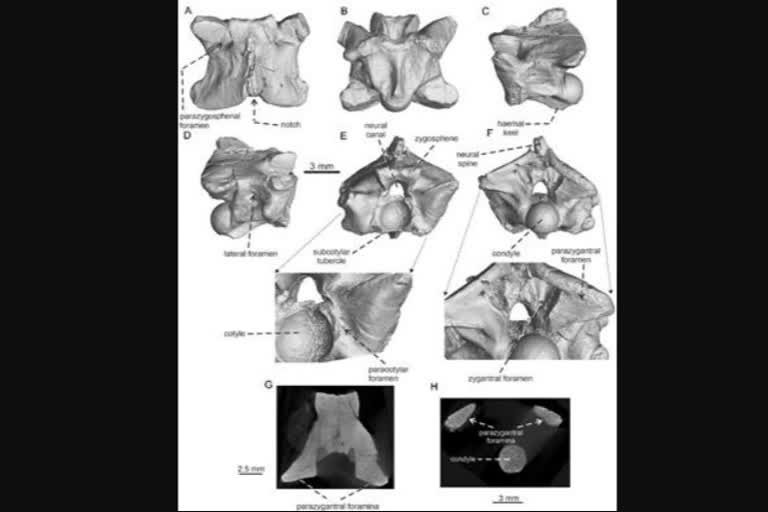New Delhi: A group of Indian scientists, which was joined by another scientist in Slovakia, has found the fossil of a Madtsoiidae snake from the molasse deposits of the Ladakh region in the Himalayas. This is the first such discovery which indicates the presence of this species of snakes in the Indian subcontinent for a much longer time than what was previously thought.
The Madtsoiidae snake fossil was, according to the recent research paper published in the Journal of Vertebrate Paleontology, collected from the lower part of the Ladakh Molasse Group along Kargil-Akchamal-Batalik road in the Kargil district of the Union Territory.
Madtsoiidae snakes are an extinct group of medium-sized to gigantic snakes. They first appeared during the late Cretaceous period, which started 145 million years ago and ended 66 million years ago, running for 79 million years. These snakes were primarily found in the Gondwanan landmasses, which include South America, Africa, Antarctica, Australia, the Indian Subcontinent, Zealandia, and Arabia.
According to the authors of the study, the record of these snakes during the Cenozoic period, which started 65 million years ago and is still running, is extremely scarce.
From the fossil record, it appears that the whole group disappeared in the mid-Paleogene period (56 million to 33.9 million years ago) across most Gondwanan continents except for Australia where these snakes survived with its last known taxon Wonambi till late Pleistocene period which lasted from 1.64 million years ago to 10,000 years ago.
The study, which has been published in the Journal of Vertebrate Paleontology, was authored by Dr Ningthoujam Premjit Singh (corresponding author), Dr Ramesh Kumar Sehgal, and Abhishek Pratap Singh from Wadia Institute of Himalayan Geology, Dehradun, and Dr Rajeev Patnaik and Wasim Abass Wazir from Panjab University Chandigarh, and Dr Navin Kumar and Piyush Uniyal from Indian Institute of Technology Ropar, and also Dr Andrej Čerňanský of Comenius University Slovakia.
The authors reported for the first time the discovery of the fossil of a Madtsoiidae snake from the late Oligocene (which lasted from about 33.7 to 23.8 million years ago) molasses deposits of Ladakh in the Himalayan region in India. Molasses deposits are a kind of thick paralic sedimentary deposit consisting of soft, ungraded sandstones, shales and marls etc.
The occurrence of Madtsoiidae snake fossils from the Oligocene period, which lasted from 35.4 million to 23.3 million years ago, Ladakh indicates their continuity at least to the end of the Paleogene period that spans 43 million years from the end of the Cretaceous period 66 million years ago.
The research published in the Journal of Vertebrate Paleontology shows that the members of this group were successful in this subcontinent for much longer time than previously thought.
“The global climatic shifts and the prominent biotic reorganization across the Eocene-Oligocene boundary (which correlates to the European Grande Coupure), did not cause the extinction of this important group of snakes in India,” the authors said in the study. The newly found fossil specimen has been stored in the repository of Wadia Institute, an autonomous institute of the Department of Science and Technology.
Also read: 10 suspected dinosaur eggs found in MP's Barwani with individual weight up to 40 kg



